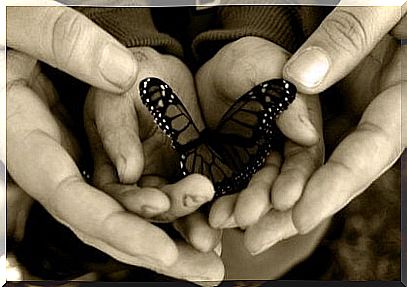Kindness: A Universal Language

Genuine kindness gives great strength to its owner. It goes far beyond good manners or formalisms. When authentic, it reflects true consideration and sincere respect for others. It is also proof of a forged personality and, above all, it is a key that opens most doors.
In fact, kindness is a universal language. And it is not a language that must be used only in social gatherings but, above all, in difficult circumstances and with the most “crude” people. Almost all human beings are permeable / vulnerable to the strength of an affable attitude.
Sometimes kindness is confused with hypocrisy. By showing a false consideration towards others or by avoiding conflict by choosing silence or the use of euphemisms. This is not kindness, but calculation and manipulation. True kindness is mainly reflected in body language rather than formalisms. Below we show you some ways to detect whether it is genuine or not.
Signs that indicate kindness
Visual contact
Eye contact is one of the areas where both hostility and kindness are best reflected. Whoever refuses to look in the eye expresses rejection of the person. Even those who raise their chins, to look from above or over their shoulder at their interlocutor, reflect hostility.
In the language of kindness, the gaze is spontaneous and affectionate. A kind person looks his interlocutor in the eye as he speaks, and looks away when he is speaking. This is the natural way eyes express themselves in normal conversation, where people feel comfortable and on the same level.

Gestures of acceptance
When a person is really nice, he respects the opinions of others. He knows how to listen to others and knows how to attribute value to what he says, even when it does not coincide with his thoughts. For this reason, it is common for him to show gestures of approval in front of his interlocutor, as a way to liven up the conversation.
Nodding your head or tilting it towards the other are expressions that encourage the interlocutor to continue talking. They encourage him to express himself and break down any barriers that may exist between the two. Furthermore, a smile is also a gesture of approval and acceptance. All this makes the atmosphere more relaxed and the connection with other people is more real.
Balance in conversation
We are all capable of conversing, but few are those who make the most of this “art”. When kindness is spontaneously present, it goes without saying that the interaction is based on a balance. There is a time to speak and another to listen. It is the only way to establish bilateral communication.
Monopolizing conversations or turning them around a topic that is not of common interest dries up communication. The ideal is that everyone can participate. If there is no interest in imposing or standing out, this happens naturally, without any effort so that what interests only one of the people involved happens .

Flattery is not synonymous with kindness
Some people continually adopt the role of “hosts of life”, wherever or whenever they are. They make flattery a way to relate to others. They employ seemingly affectionate words and attitudes. However, they do it in series, automatically, like reading a book that doesn’t quite fit what they actually think.
Kindness has nothing to do with flattery. Honestly recognizing the merits and successes of others is one thing, giving compliments to flatter is another. Being nice is one thing, coaxing and pretending to be pleased is another. Kindness, despite respecting certain protocols, does not require theatricality and fiction.

It should be emphasized that kindness is one of the characteristics that is taken into account in one of the best known personality tests. Let’s talk about the theory of the “Big Five”, of which we can find an exhaustive description in the study of Jan JF Ter Laak.
Any human conduct and any word is far better when it is done or spoken with kindness. If we were more consistent in this sense, we would be able to deal with difficult moments or relationships with greater fluidity and intelligence. Just add a touch of kindness to your life to feel better.









